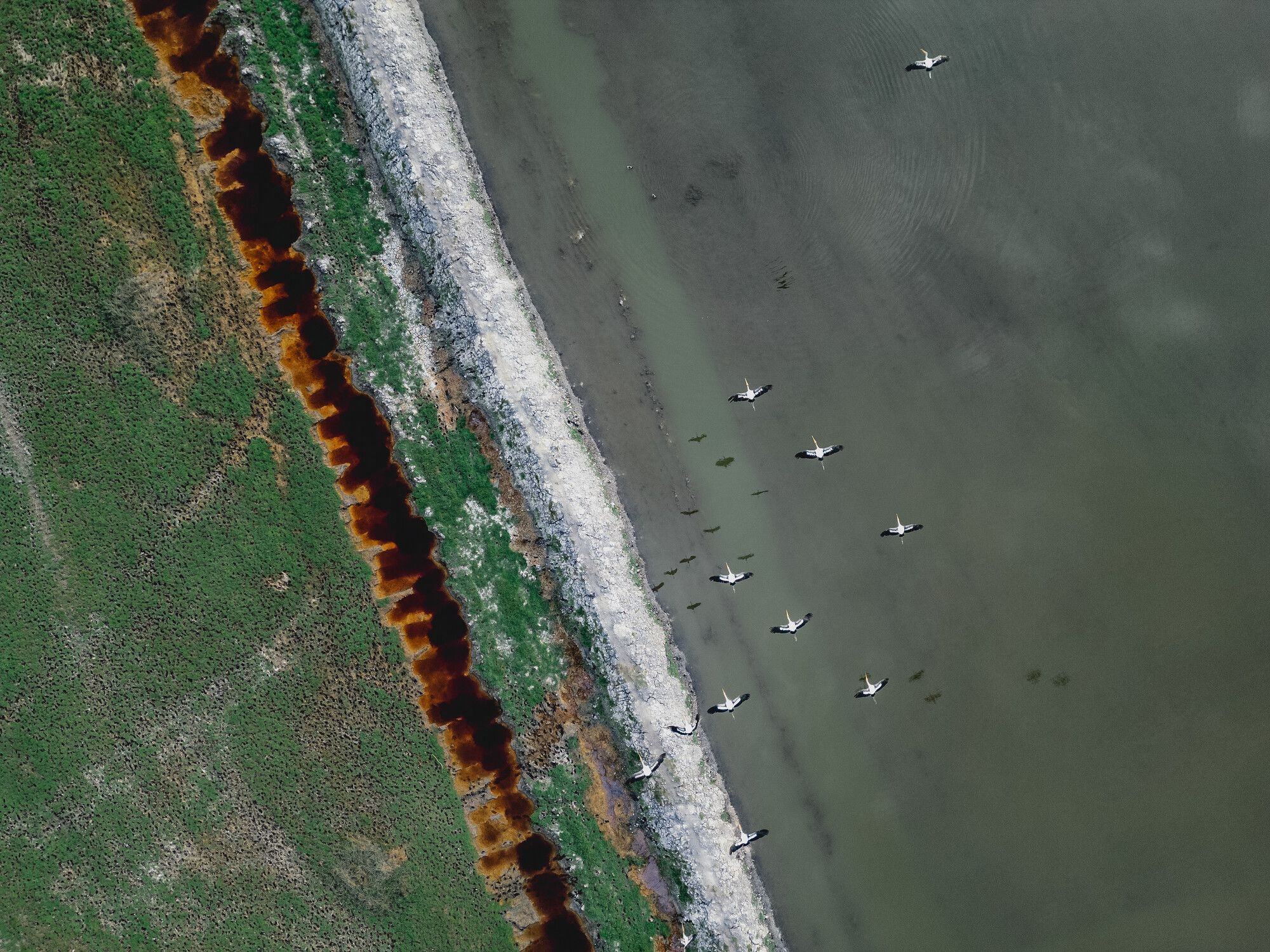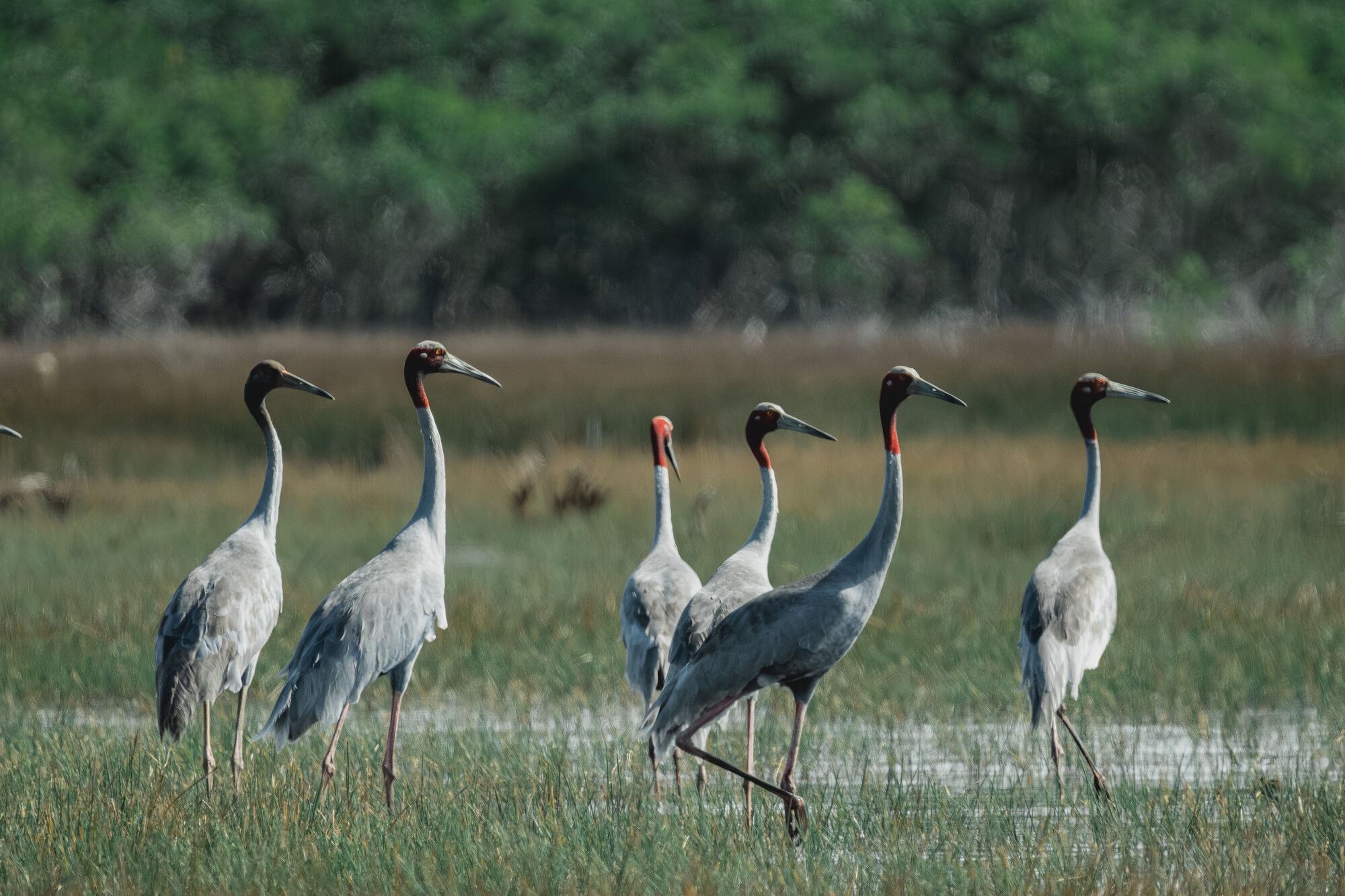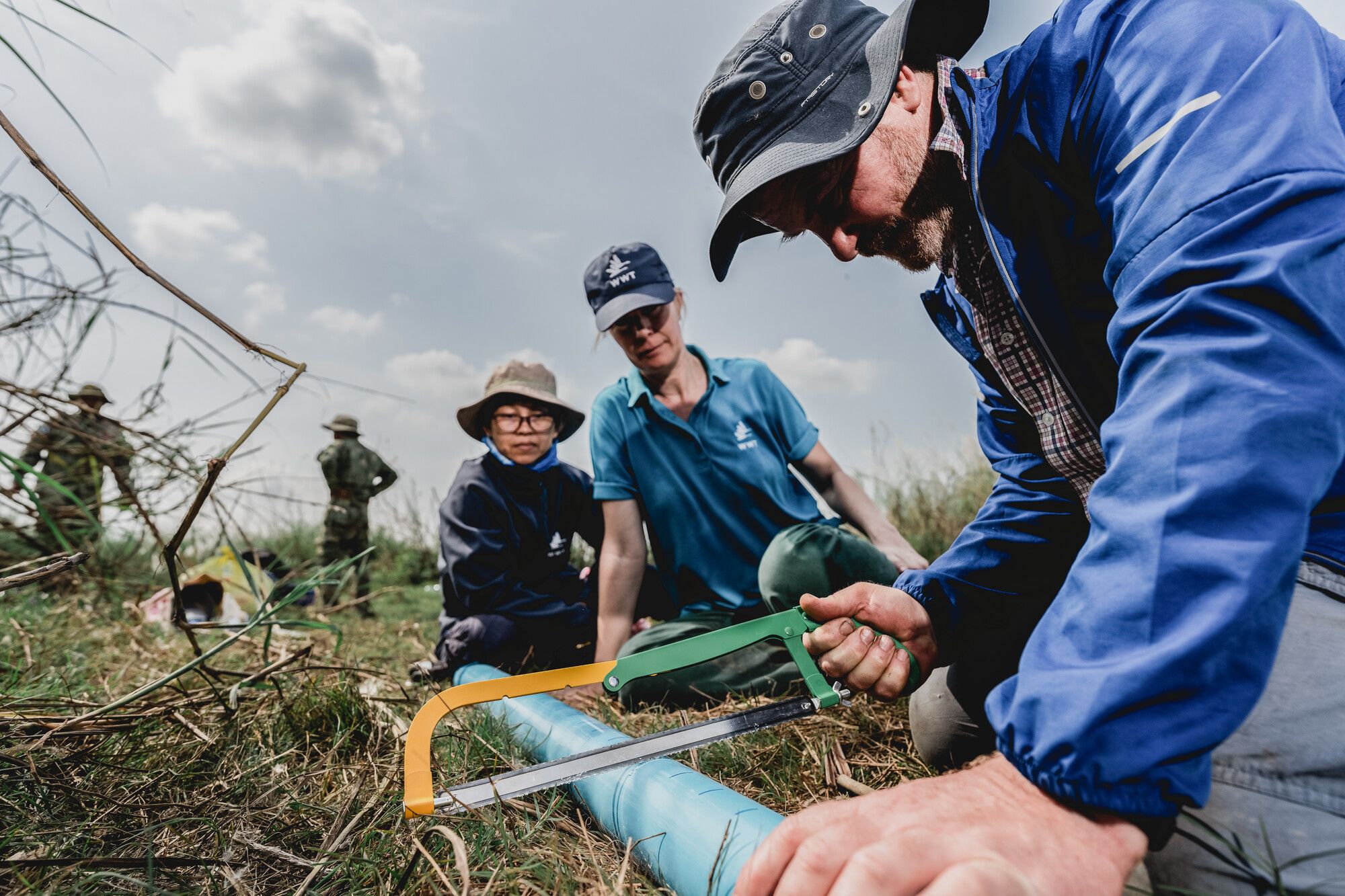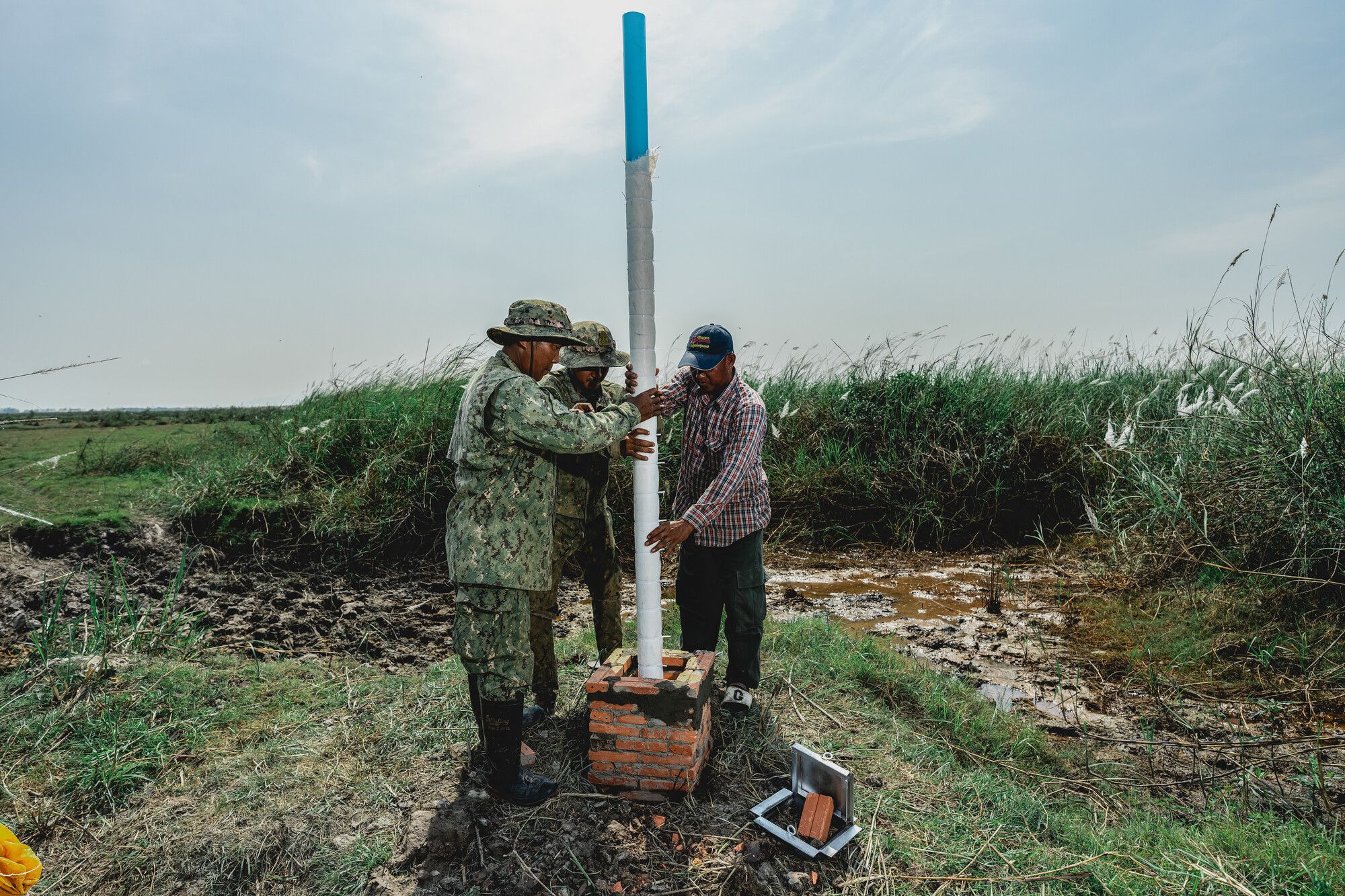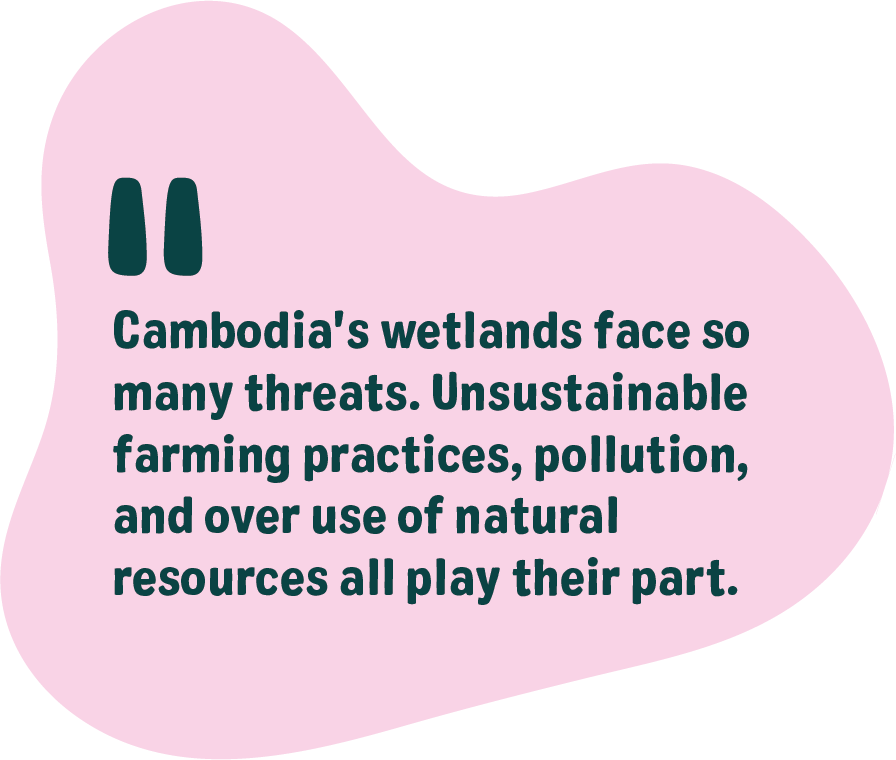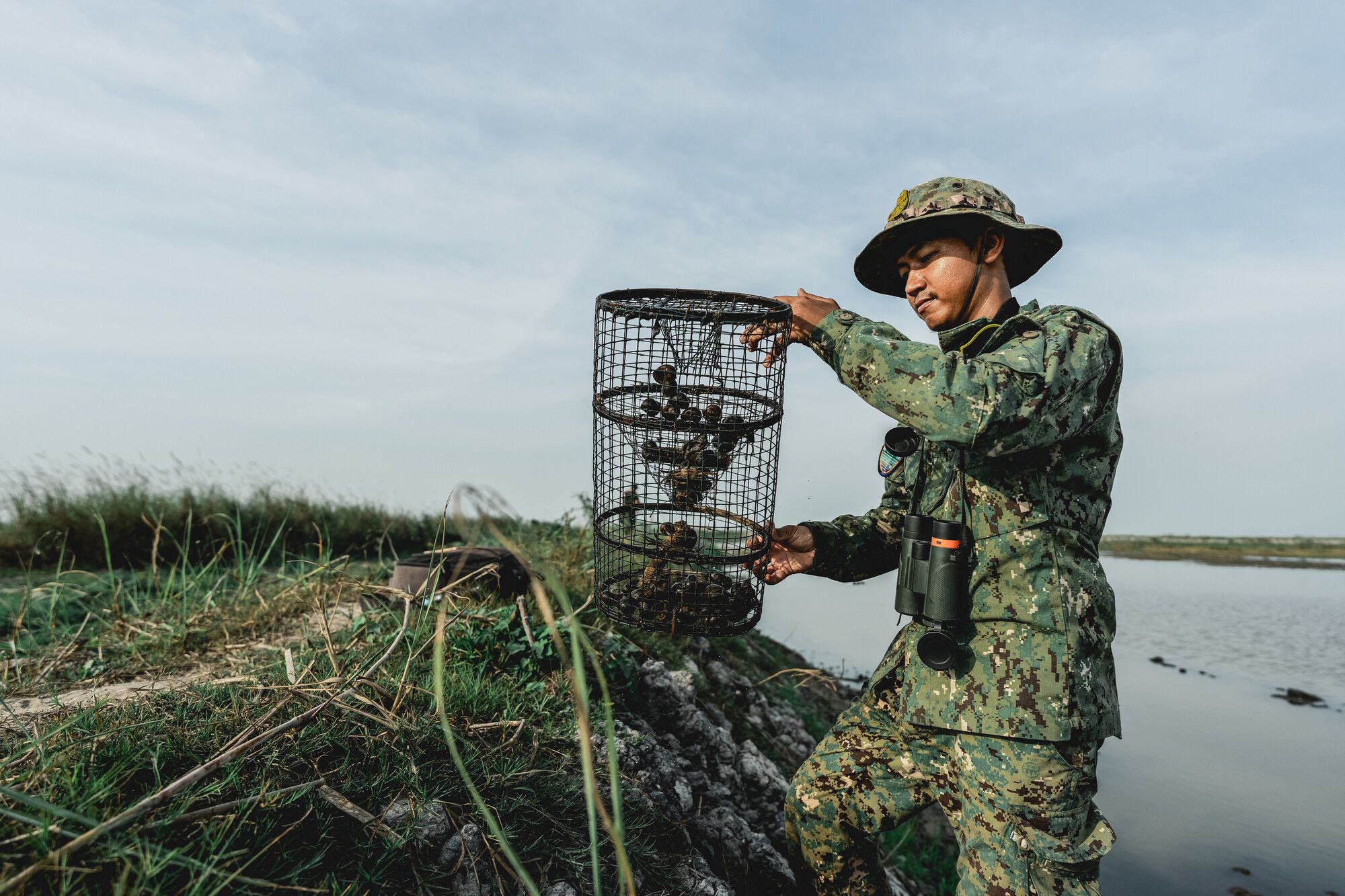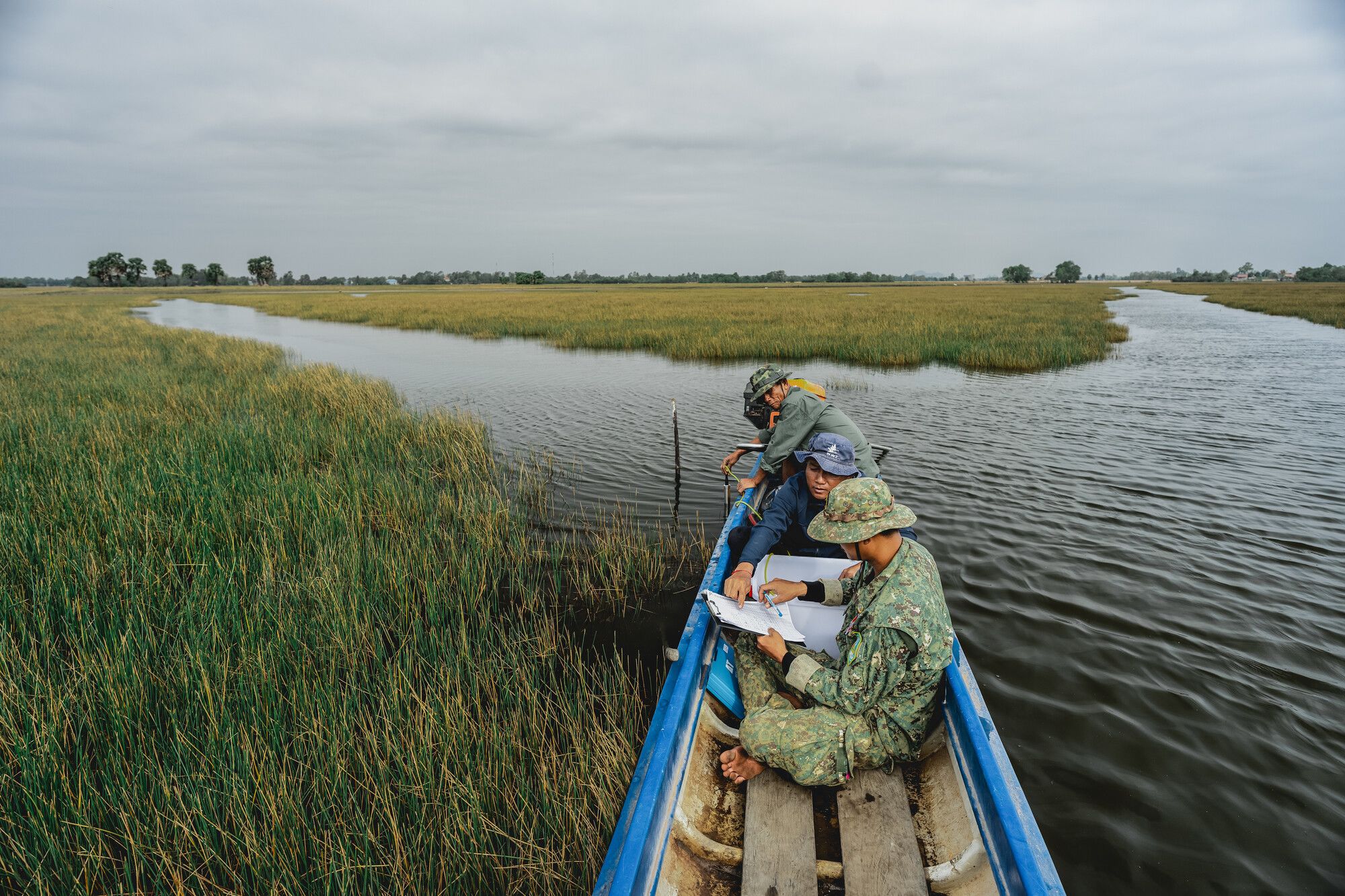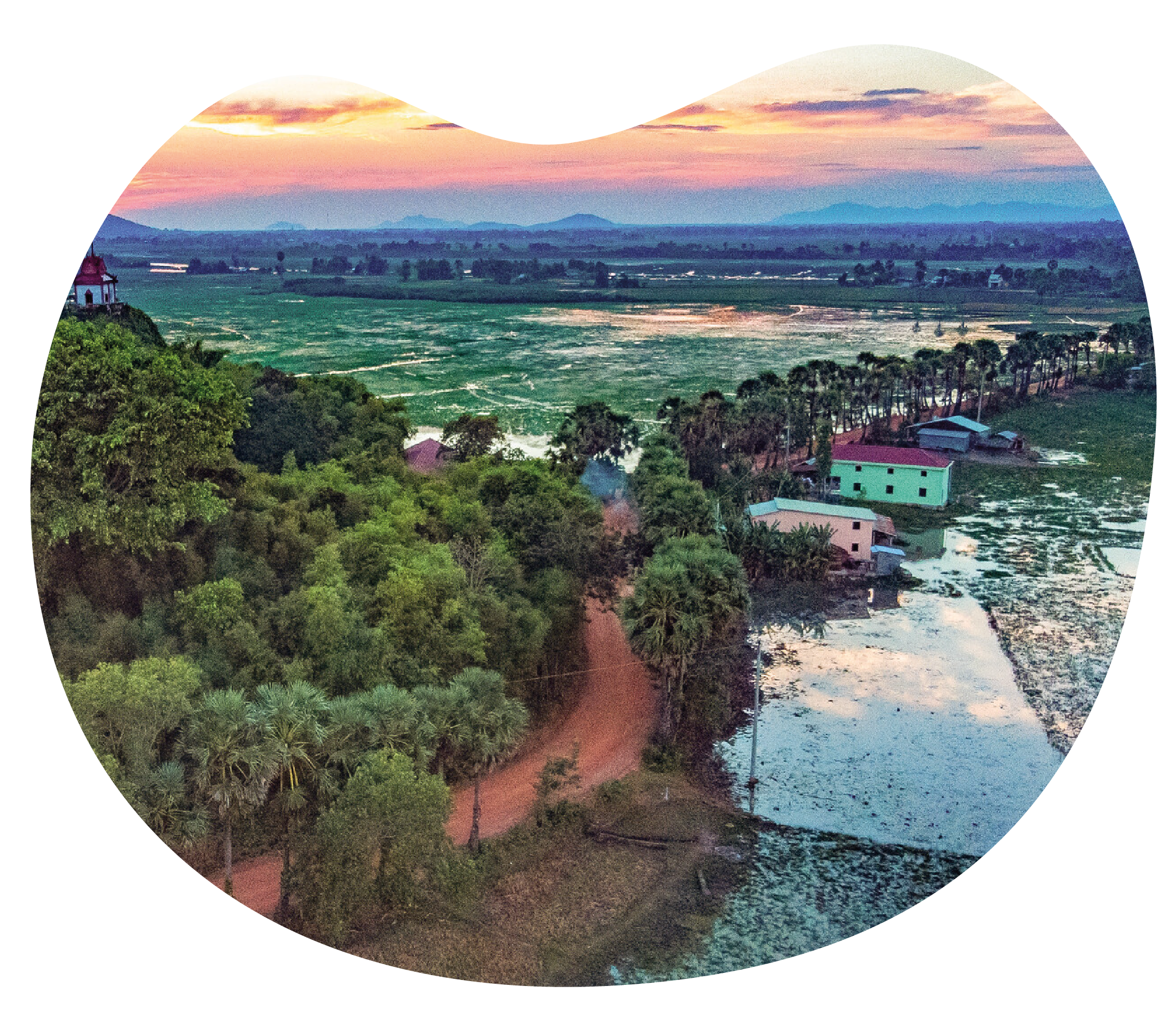Restoring Cambodia’s extraordinary life-giving wetlands.
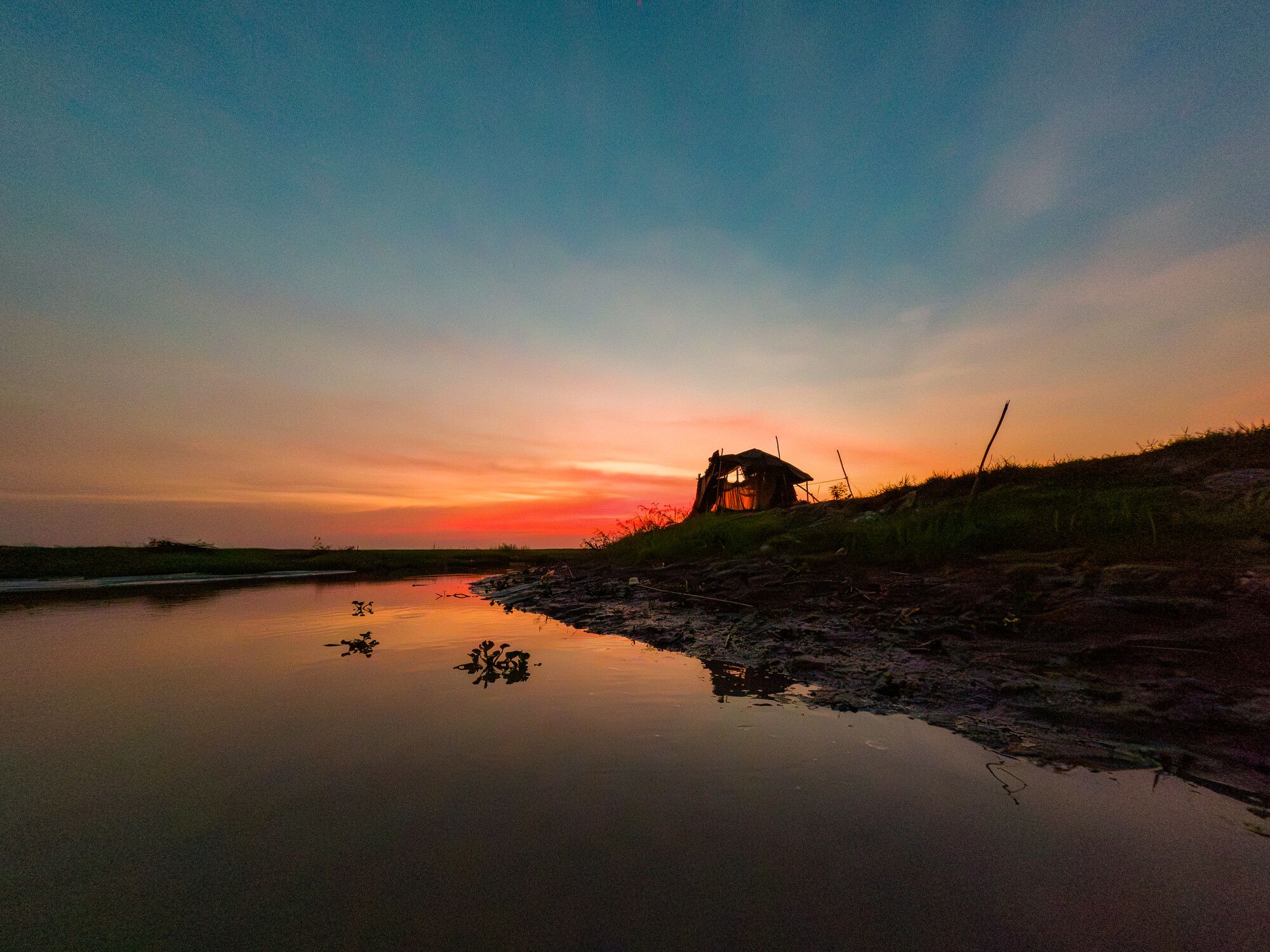
Meet WWT’s Bunthary Srun.
She’s helping restore and protect the valuable wetlands of Cambodia’s Lower Mekong Delta, for people and wildlife.
This is her story…

I’m lucky enough to work in a place of breath-taking beauty. An intricate maze of rivers, swamps and islands full of wonder and wildlife.
Delightfully named painted storks fly over emerald green rice paddies...
Water buffalo mingle with black tailed godwits, and sarus cranes arrive to browse on water chestnuts in the flooded grasslands.
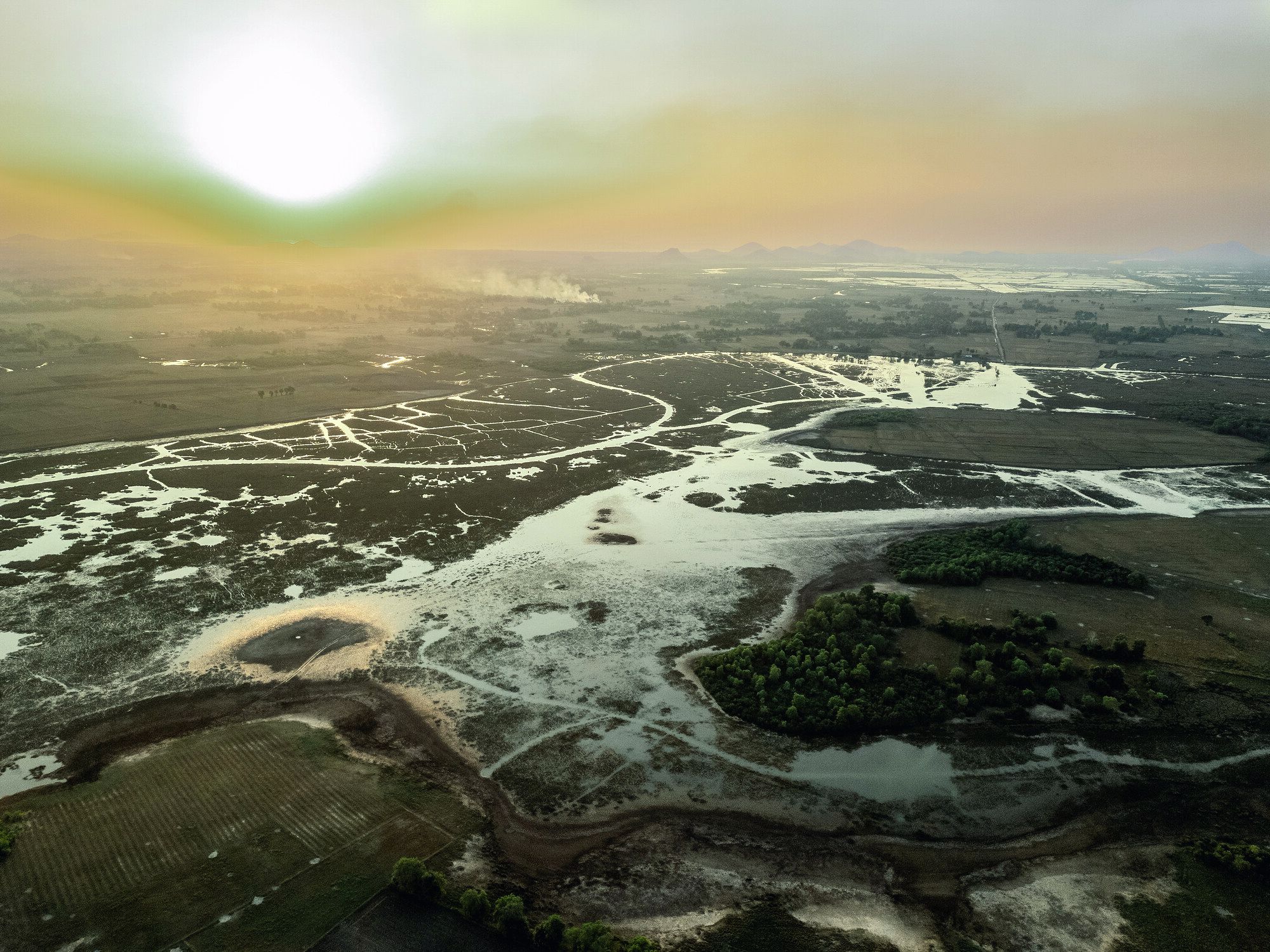
And the quickest way to get around is by boat.
Today I’m taking you on a tour of just some of the incredible work my team and I are doing to protect Cambodia’s wetlands.

A flourishing forest
First stop is our fledgling flooded forest.
It’s great to see our seedlings going from strength to strength. But they still need lots of care and attention.
Some need to be replanted. Others need weeds cleared, to give them the best chance of thriving.

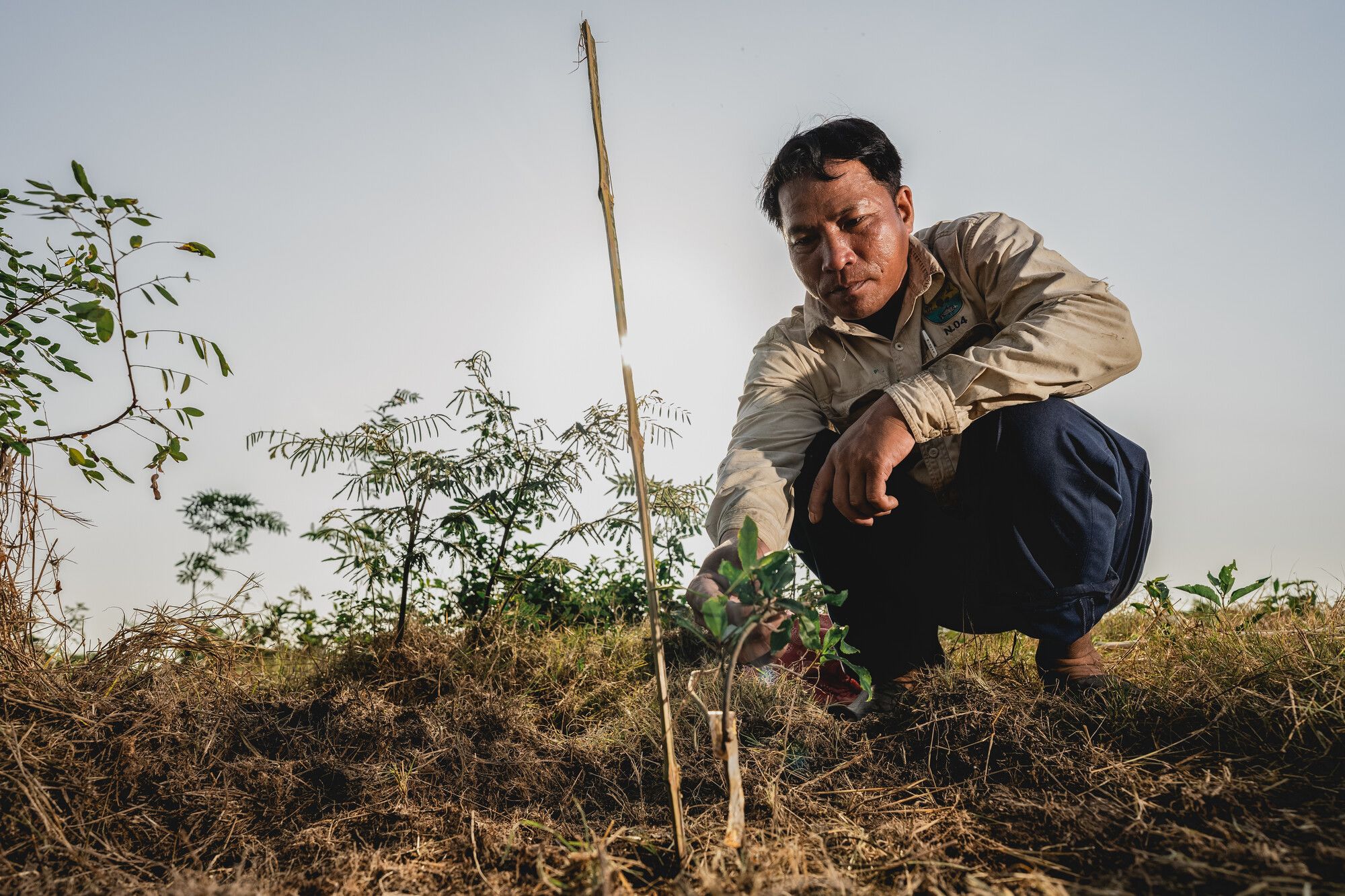
Once fully grown, they’ll turn this area into 13 hectares of flooded forest. It’ll provide valuable fish nurseries for local people.
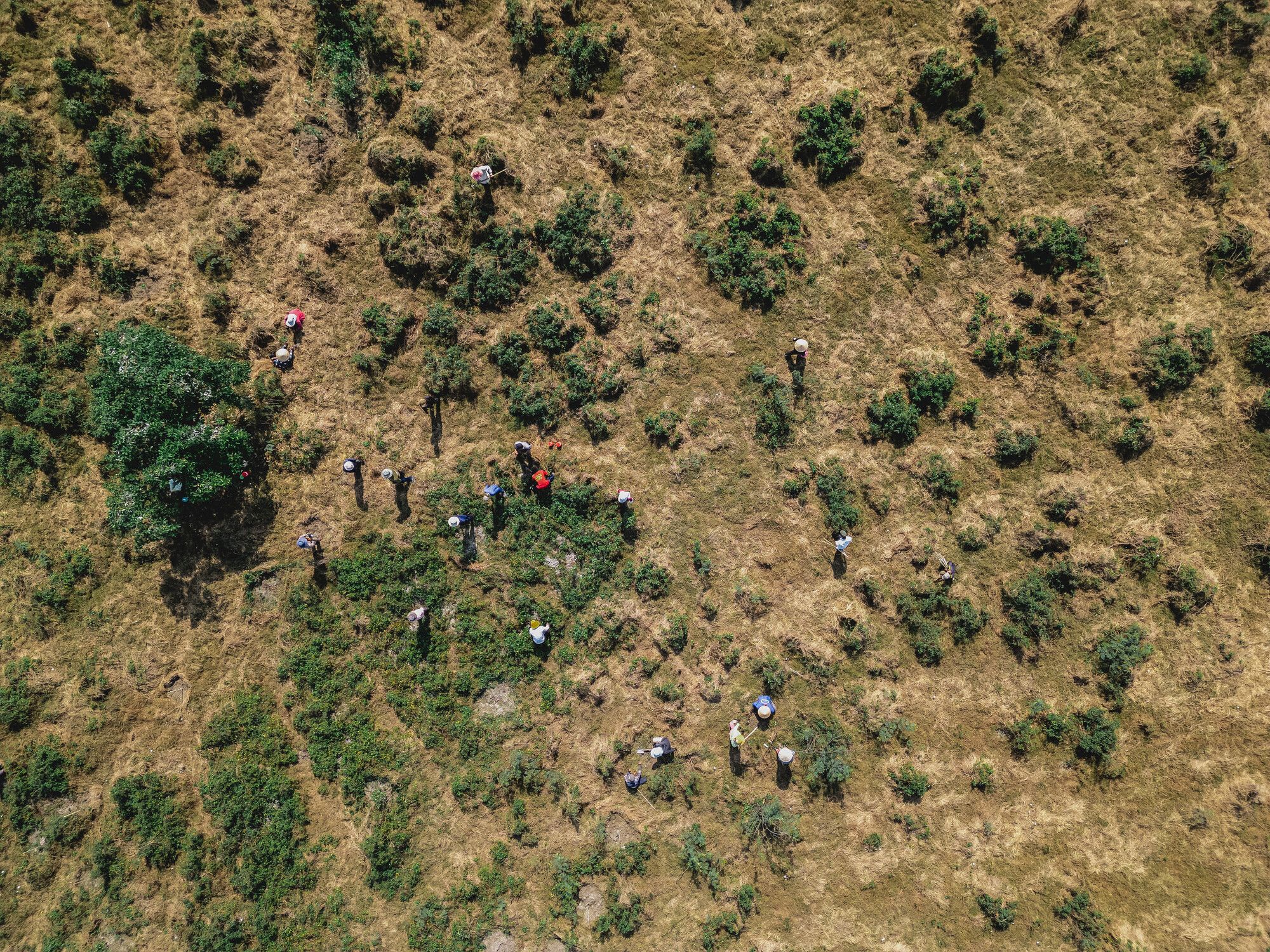
A more sustainable alternative
Time to visit our farmers. Rice is a staple crop in this flooded land. But this year we’re trying something new. Black eye beans.
These farmers are planting them upstream of our site in Anlung Pring as a secondary crop after their rice harvest, to boost their income.
Growing beans also helps reduce pollution in our wetlands. Because they help enrich the soil, farmers need less chemical fertiliser.
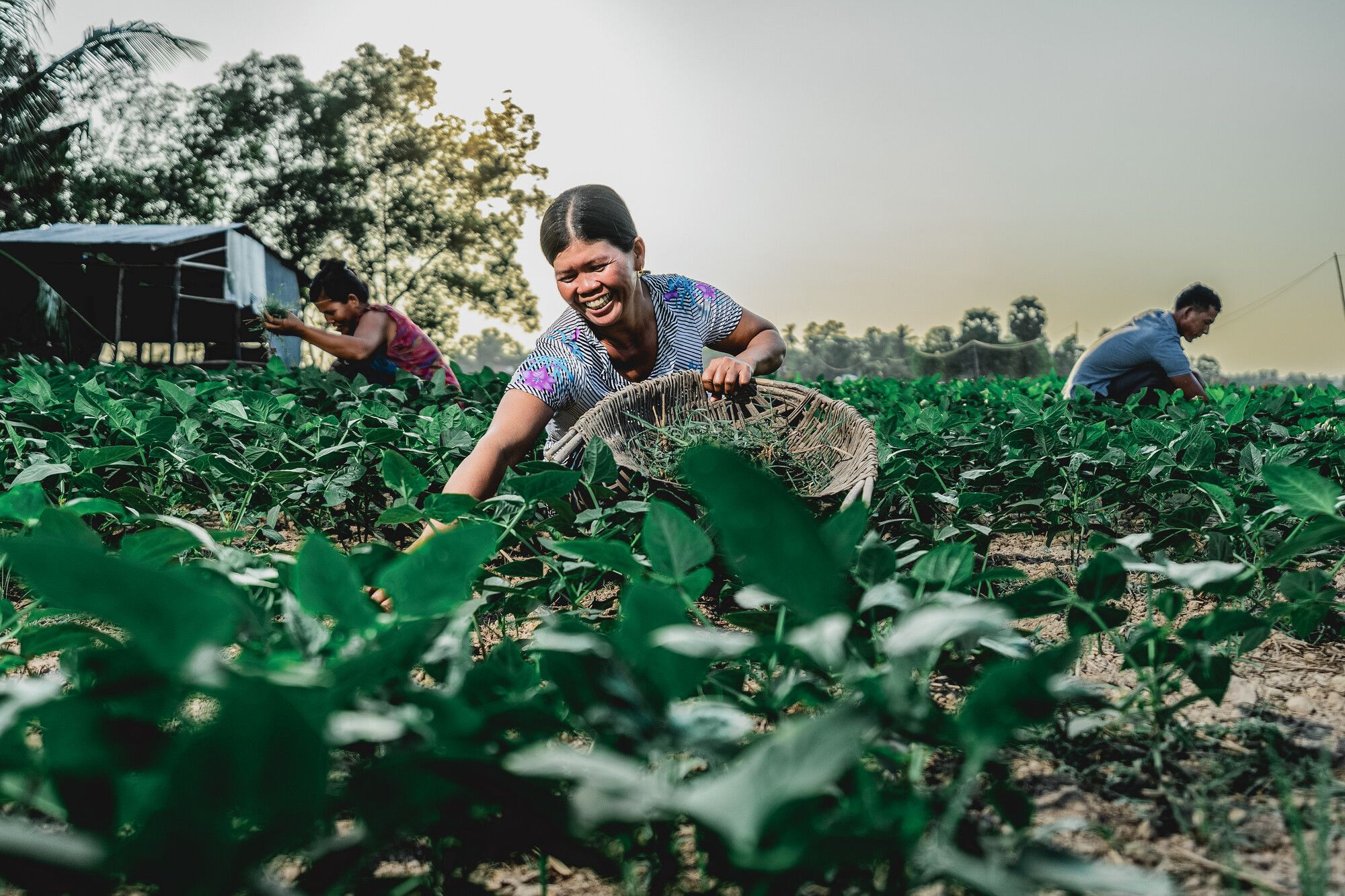
Wetter for longer
In Cambodia, water brings life. But climate change and irrigation for agriculture is drying out our wetlands. So, we’re using dykes like this one to hold the water on the land for longer after the wet season.
But is it working?
Today, I’m helping prepare dip wells to measure how wet the soil is. Once installed, they’ll tell us how successful we’ve been at keeping the grasslands wetter for longer.

Protecting our precious wetlands
Our wetlands are in a conservation area, so I work closely with rangers to keep them safe.

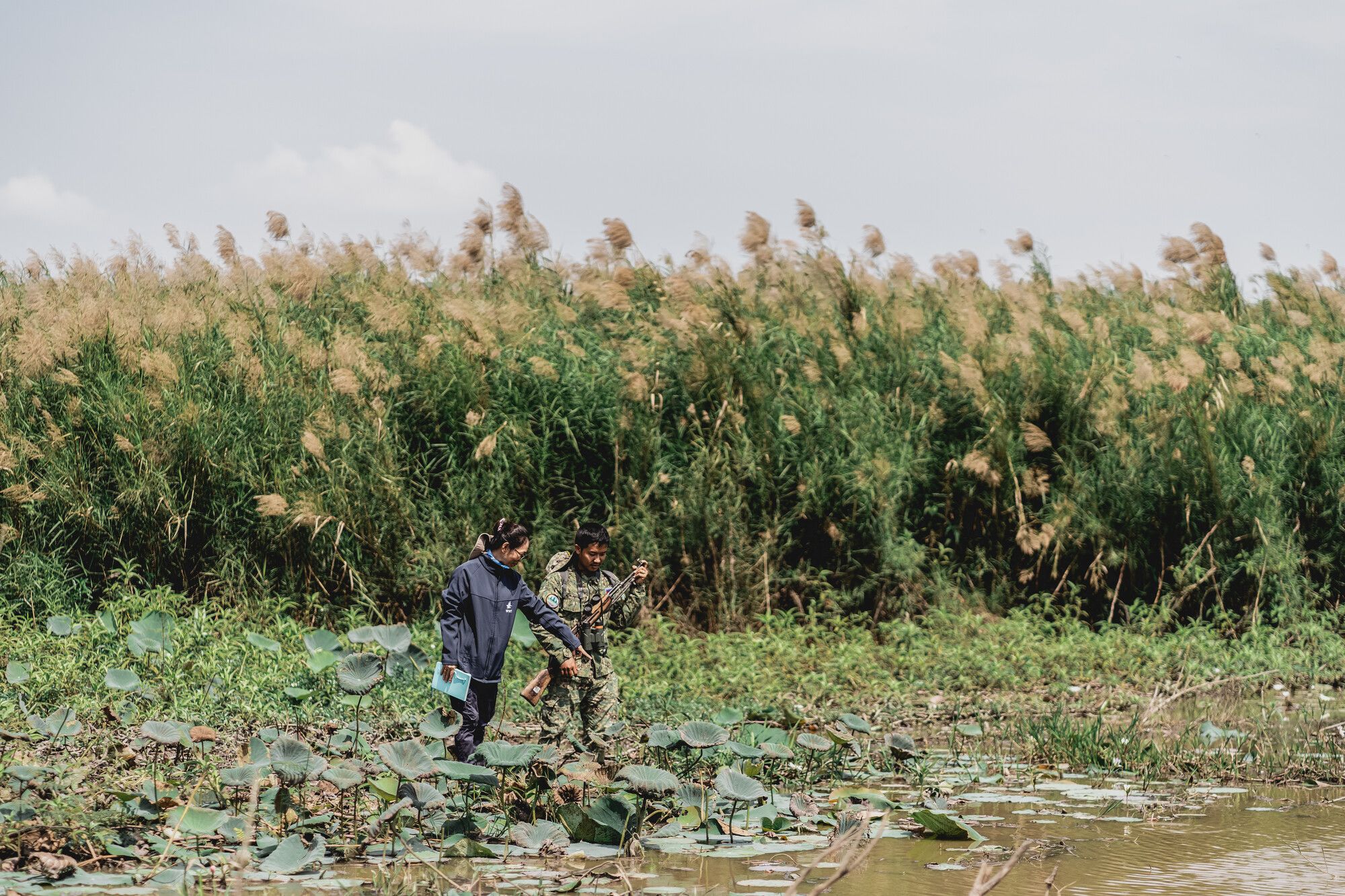
The rangers patrol the area regularly by boat. They check for any illegal activities like bomb fishing or fish trapping.
Here they’re helping remove fish traps.
We’re also training the rangers to help us monitor water quality.
Pesticides used to grow rice end up in Cambodia’s freshwater wetlands and poison the water. By encouraging a more sustainable approach to farming, we're aiming to improve water quality.
We regularly test the water to check pollution levels. Early results show water quality in the wetlands where we work is quite good.
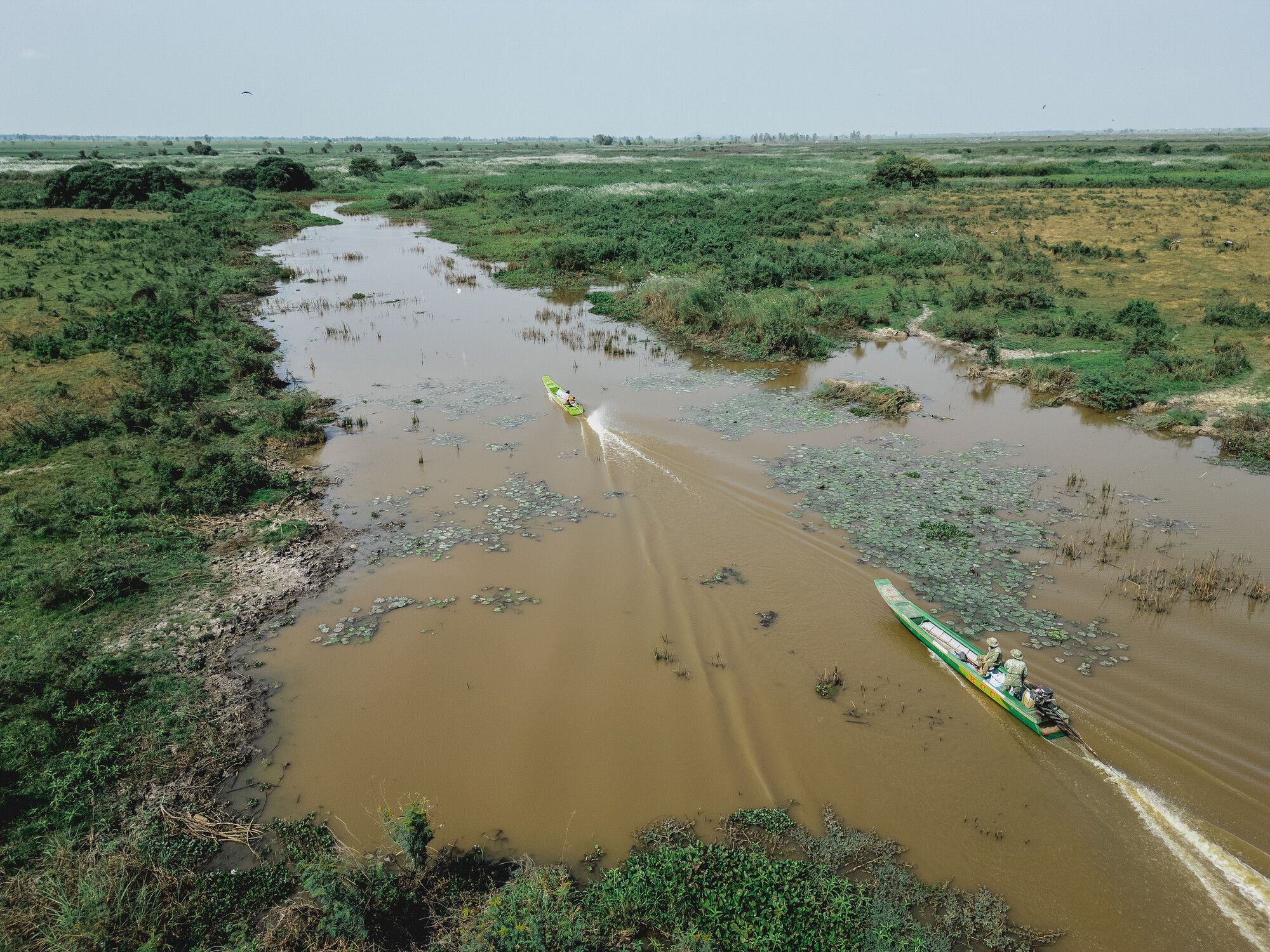
Cambodia’s wildlife and people need healthy wetlands to survive.
Thanks to you, we’re achieving so much, protecting, restoring and reviving these extraordinary places.
And the results are clear. Better lives for farming and fishing communities means more habitat for cranes and other wildlife.
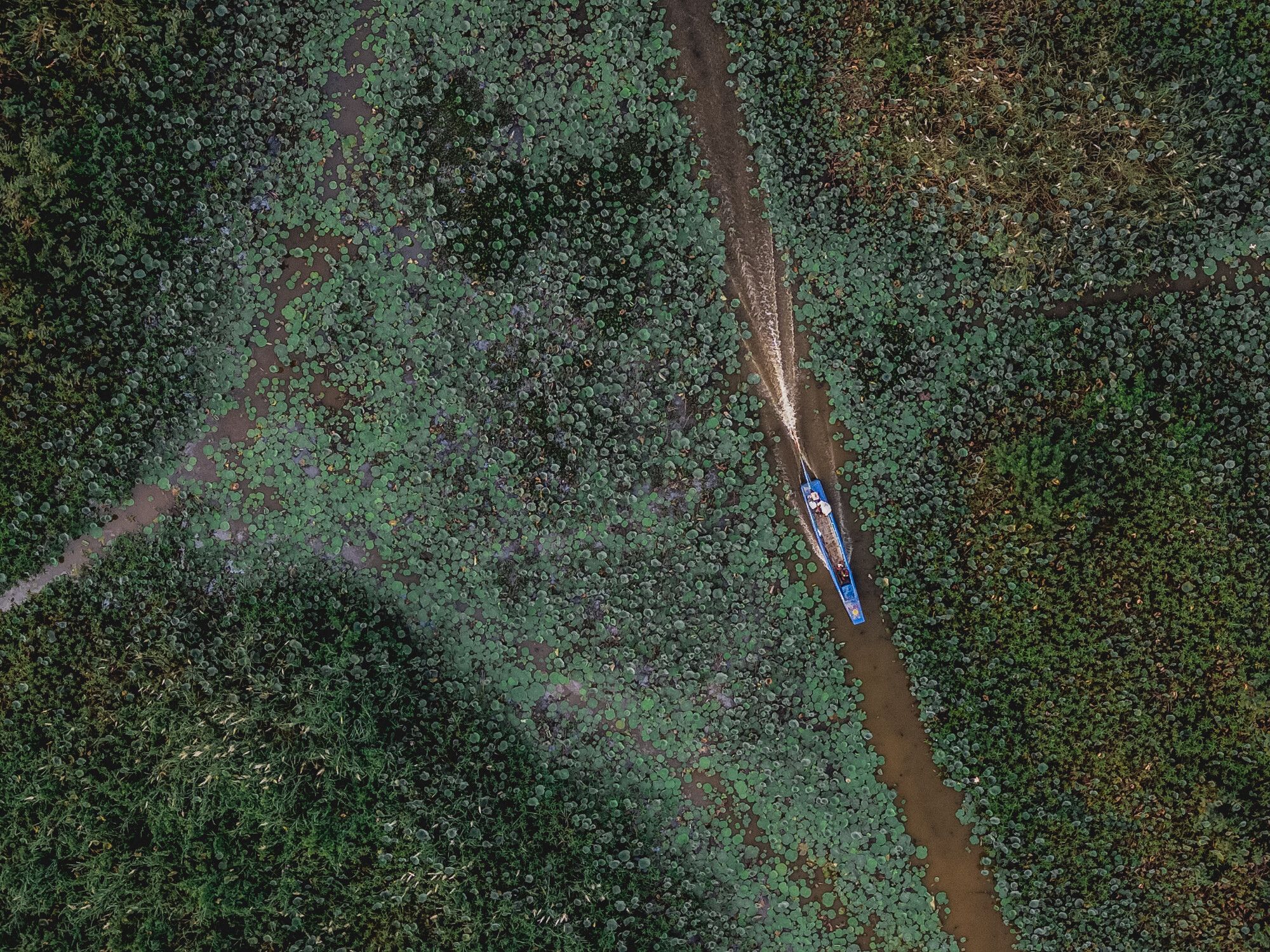
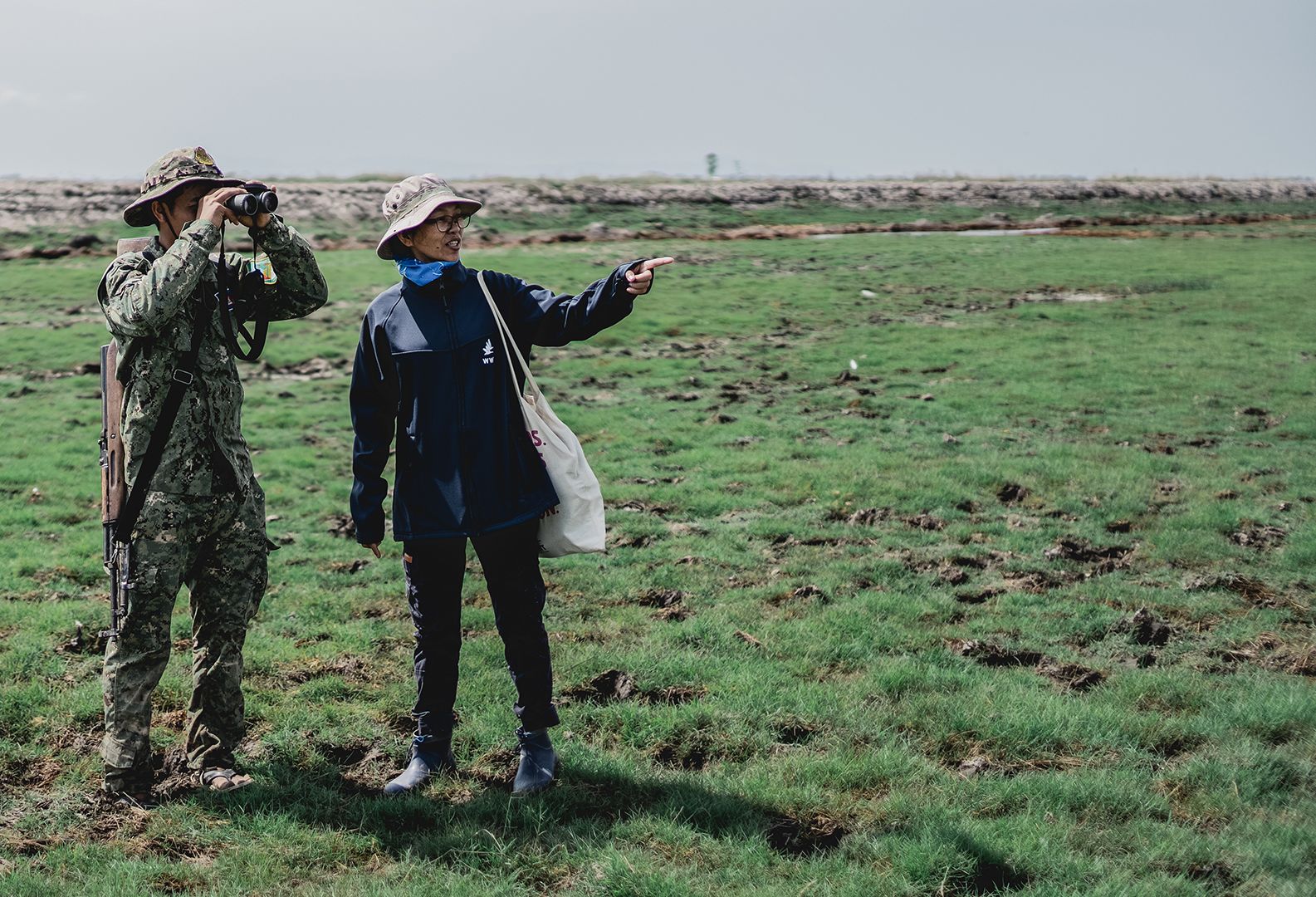
This photo story was brought to you by Bunthary Srun, WWT’s Project Coordinator in Cambodia.
Thank you to the following organisations who have generously funded the work mentioned in this feature:
CEPF
The Albert George and Nancy Caroline Youngman Trust
The Critical Ecosystem Partnership Fund
A joint initiative of Margaret A. Cargill Philanthropies, l’Agence Française de Développement, Conservation International, the European Union, the Global Environment Facility, the Government of Japan, and the World Bank. The Fund's fundamental goal is to ensure civil society is engaged in biodiversity conservation.
You can find out more about our work in Cambodia here:
A journey into the heart of Cambodia's wetlands
Hop aboard with WWT's Daphne Kerhoas as she visits our projects in the Lower Mekong Delta..
The Kingdom of wetlands
Find out how we're supporting communities in Cambodia, one of the most wetland dependent countries in the world.
Securing Cambodia's wetlands
Find out what WWT is doing to save Cambodia's precious wetlands and the wildlife that live there.



